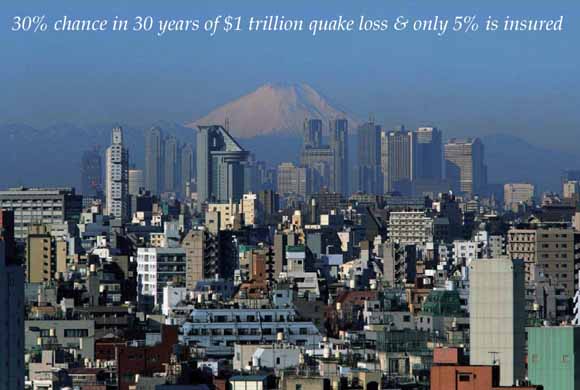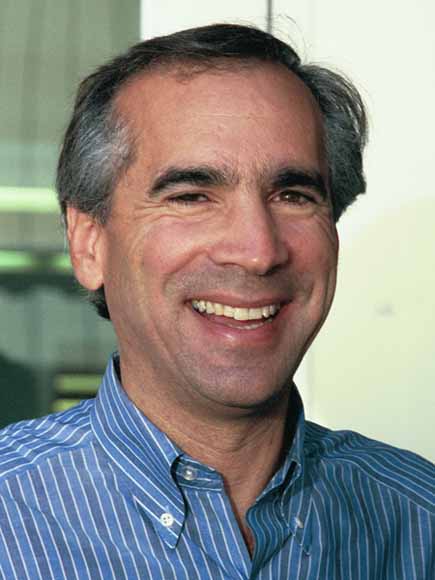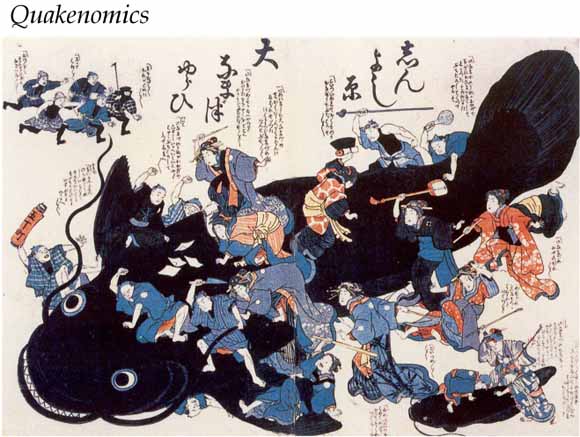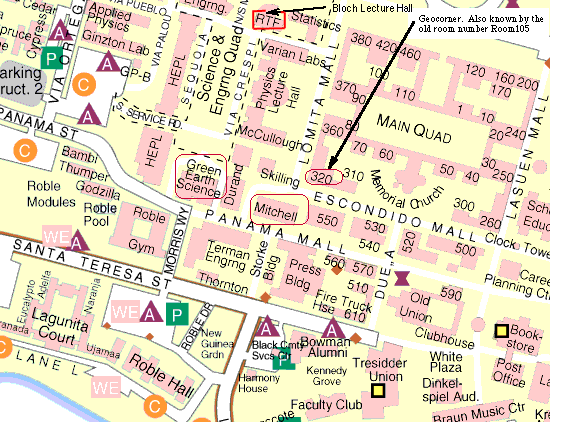
Location: Stanford University
see Map showing Mitchell and GeoCorner Room 320
This will be the 387th meeting since 1954

Tokyo and its outlying cities are home to one-quarter of Japan's 127 million people. Highly destructive earthquakes struck the capital in 1703, 1855 and 1923, the last of which took 105,000 lives. The Japanese government estimates that reoccurrence of any of these shocks today would cost about a trillion dollars, exceeding the Japanese annual budget, of which less than 10 percent is insured. Fueled by greater Tokyo's rich seismic data trove but challenged by its magnificent complexity, our joint Japanese–U.S group carried out a new study of the capital's earthquake hazards.
We used the prehistoric record of great earthquakes preserved by uplifted marine terraces and tsunami deposits, a newly digitized dataset of historical shaking, the dense modern seismic network, and the world's best geodetic array to reinterpret the tectonic structure, identify major active faults and their slip rates, and estimate their earthquake frequency. We propose that a dislodged block of the Pacific plate is jammed between the Pacific, Philippine Sea and Eurasian plates beneath Tokyo. We suggest that the block controls much of Tokyo's seismic behavior for large (M≤7.5) shocks, including the damaging 1855 M~7.3 Ansei–Edo earthquake. On the basis of frequency-magnitude curves for the seismicity beneath greater Tokyo, earthquakes similar to the Ansei–Edo event should be quite frequent, with a ~26%likelihood in an average 30-yr period, and so such events dominate the combined probabilities. In contrast, our renewal (time dependent) probability for the great M ≥7.9 plate boundary shocks such as struck in 1923 is 0.5% for the next 30 yr, with a time-averaged 30-yr probability of ~9%. The resulting net likelihood for severe shaking (0.75-1.0g) in Tokyo, Kawasaki, and Yokohama for the next 30 years is ~33%.

Ross Stein

Reservations: The preferred way to make reservations is simply to email Janice Sellers at janicemsj@gmail.com by March. 9, tell her you will attend, commit to pay, and bring your payment to the meeting. Janice always emails a confirmation; if you don't get one, assume email crashed yet again and email her a second time. A check made to "PGS" is preferred, payable at the meeting.
If you want to pay in advance:
Stanford faculty and students: Please make dinner reservations by March. 9. Contact Dr. Elizabeth Miller via her mailbox (and leave check), Geological and Environmental Sciences Office, Geocorner - Bldg. 320 (Rm. 205). Make checks out to "PGS."
All others, including faculty and students from other Bay Area universities and colleges and USGS: Please make dinner reservations by March. 9. Contact Janice Sellers, at 1066 28th Street, Oakland, CA 94608-4547, (510) 268-8254. Send check made out to "PGS" to Janice.
Dinner is $30.00. Includes wine (5:30 to 6:15 PM.) and dinner (6:15-7:30 PM.).
For students from all universities and colleges, the dinner, including the social 3/4-hour, is $5.00 and is partially subsidized thanks to the School of Earth Sciences, Stanford University (Note, no-show reservations owe the full price).
Doris, whose wonderful crew prepares our meals, asked that we let you know that people who are late RSVP'ing and people who show up without a reservation will be welcome but that they will be eating on paper plates with plastic utensils (food supply permitting).
Dues for Academic Year 2006-2007 ($10.00) should be sent to Janice Sellers, 1066 28th Street, Oakland, CA 94608-4547. Janice's phone: (510) 268-8254.
Officers: Ray Wells, President; Dwight Harbaugh and Elizabeth Miller, Co-Vice Presidents; Mike Diggles, Secretary; Janice Sellers, Treasurer; Bob Coleman, Field-Trip Czar

Date created: March 8, 2007
Last modified: March 9, 2007
Created by: Mike Diggles, Webmaster-Secretary, PGS.